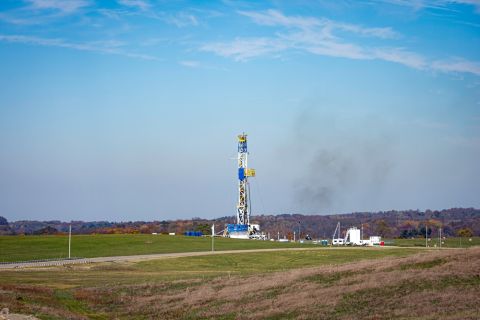U.S. refining capacity last year fell 4.5% to 18.13 million bbl/d from a record 18.98 million bbl/d a year earlier, the U.S. government reported on June 25, reflecting weak demand for motor fuels during the COVID-19 pandemic.
It was the first annual decline since 2018, when capacity fell by 18,530 bbl/d and the largest since 2012, according to the Energy Information Administration (EIA) data. That year capacity shrank 414,192 bbl/d following the Great Recession.
U.S. refiners last year suffered deep financial losses and closed five facilities as the pandemic slashed fuel sales. Average U.S. gasoline consumption fell 13% last year with gasoline and diesel prices hitting a four-year low, according to government figures.
Five refineries, with a combined capacity of 801,146 bbl/d, permanently shut following the 1.3 million-bbl/d drop in gasoline consumption as businesses closed and consumers stayed home. The closings drove capacity down to a level comparable to 2016’s 18.3 million bbl/d.
The nation’s largest crude oil refiner Marathon Petroleum shut three refineries while energy major Royal Dutch Shell and independent refiner HollyFrontier each shut one in 2020.
Marathon Petroleum converted one refinery to a renewable diesel plant and is converting another to produce renewable diesel. HollyFrontier also plans to convert its idled refinery into a renewable diesel producer.
The fire-ravaged Philadelphia Energy Systems refinery was sold last year to a developer who plans to demolish it.
This year, the 200,000-bbl/d Limetree Bay refinery in St. Croix, U.S. Virgin Islands, shut in May under orders from the EPA. On June 28, owner Limetree Bay Energy said the plant would not restart. The EIA does not count the Limetree Bay refinery as part of total U.S. refining capacity.
Recommended Reading
EQT Ups Stake in Appalachia Gas Gathering Assets for $205MM
2024-02-14 - EQT Corp. inked upstream and midstream M&A in the fourth quarter—and the Appalachia gas giant is looking to ink more deals this year.
EQT Deal to ‘Vertically Integrate’ Equitrans Faces Steep Challenges
2024-03-11 - EQT Corp. plans to acquire Equitrans Midstream with $5.5 billion equity, but will assume debt of $7.6 billion or more in the process, while likely facing intense regulatory scrutiny.
Ohio Oil, Appalachia Gas Plays Ripe for Consolidation
2024-04-09 - With buyers “starved” for top-tier natural gas assets, Appalachia could become a dealmaking hotspot in the coming years. Operators, analysts and investors are also closely watching what comes out of the ground in the Ohio Utica oil fairway.
ONEOK CEO: ‘Huge Competitive Advantage’ to Upping Permian NGL Capacity
2024-03-27 - ONEOK is getting deeper into refined products and adding new crude pipelines through an $18.8 billion acquisition of Magellan Midstream. But the Tulsa company aims to capitalize on NGL output growth with expansion projects in the Permian and Rockies.
Daugherty: Feds Take Aggressive Posture on Oil, Gas Mergers
2024-02-01 - Newly released guidelines by the Department of Justice and Federal Trade Commission suggest that a post-deal, combined market share of more than 30% is potentially problematic.





